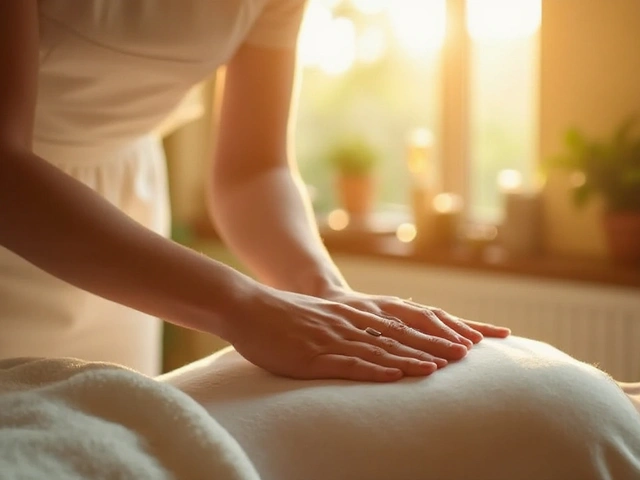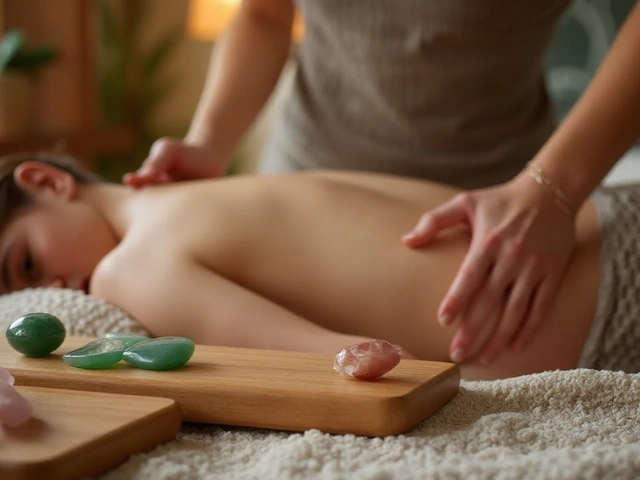Scoliosis: What Helps, What Doesn’t, and How Massage Therapies Fit In
Scoliosis can feel like a mystery: curves on an X‑ray but different pain for everyone. Some people have no symptoms, others get chronic back pain, tight muscles, and trouble sleeping. If you have scoliosis, you want straight answers—what helps the spine, what eases pain, and which therapies are safe.
Massage and bodywork can reduce pain and improve movement, but they don't fix the spine's curve by themselves. Targeted approaches—Schroth physio, bracing, and surgery when needed—address the curve. That said, therapies on this site—Feldenkrais, Hellerwork, Ortho‑Bionomy, trigger‑point release, Amma, and warm stone or acupressure—can relieve muscle imbalance, reduce stiffness, and make daily life easier.
Practical tips for safe massage with scoliosis
Use these quick rules so bodywork helps instead of hurting.
- Get medical clearance first. Ask your orthopedic or physio if massage is appropriate for your curve and pain level.
- Tell the therapist about your curve type, pain patterns, recent imaging, and any past surgeries.
- Look for therapists trained in postural work or structural integration. Techniques that focus on alignment and movement awareness (think Feldenkrais or Hellerwork) often help more than deep, one‑off forceful work.
- Start gently. Short sessions that focus on breathing, relaxation, and releasing tight muscles are better than aggressive deep tissue on an uneven spine.
Simple at‑home moves that help on bad days:
- Gentle side‑lying stretches for the ribcage and spine. Hold 20–30 seconds, breathe into the tight side.
- Foam‑roller mobility (light rolls along thoracic spine) to ease upper‑back stiffness.
- Daily posture checks: sit tall with both feet on the floor, shoulders relaxed, and a small cushion behind the lower back if needed.
When to see a specialist now:
- New or worsening weakness, numbness, or loss of balance.
- Severe pain that doesn't respond to simple care.
- Rapidly progressing curve in a teen or young adult.
Choosing the right session:
- Ask if the therapist has experience with scoliosis cases.
- Prefer sessions that combine hands‑on work with movement coaching—so you leave with exercises, not only a temporary feel‑good.
- Expect modest short‑term pain relief and improved sleep or mobility after a few sessions; long‑term curve change requires medical or physiotherapeutic programs.
What to expect from sessions
In the first visit, your therapist will ask about your history, look at posture, and maybe watch you move. Expect a mix of hands-on work, guided breathing, and homework. Sessions usually last 45–60 minutes; early visits focus on pain control and breathing, later visits add targeted strength and mobility drills. You might feel looser for a few days, then notice gradual improvements in comfort and range of motion. If a treatment causes sharp pain or pins-and-needles, stop and report it. Good therapists adjust pressure and give clear at-home steps so you keep progress between sessions. Schedule follow-ups every six to twelve weeks.
If you want a starting plan, book a brief consult with a physio trained in Schroth or a trusted therapist who uses gentle structural methods. They can craft a short program: safe stretches, breathing, and weekly bodywork to reduce pain and improve function. That’s the real win—less pain, better movement, and tools you can use every day.

Rolfing for Scoliosis: Real Relief for Stubborn Back Pain
This article dives into how Rolfing can help people living with scoliosis by improving posture, reducing pain, and making daily life more comfortable. You'll discover what Rolfing actually is, how it works, and whether it's safe. Get practical tips for finding a qualified Rolfer, learn about what sessions feel like, and see real results reported by those who've tried it. It's packed with down-to-earth advice for anyone tired of letting scoliosis rule their lives.
Categories
- Health and Wellness (148)
- Alternative Therapies (86)
- Massage Therapy (40)
- Travel and Culture (15)
- Beauty and Skincare (9)
- Holistic Health (8)
- Health and Fitness (5)
- Spirituality (5)
- Other (2)
- Personal Development (2)
Popular Articles



